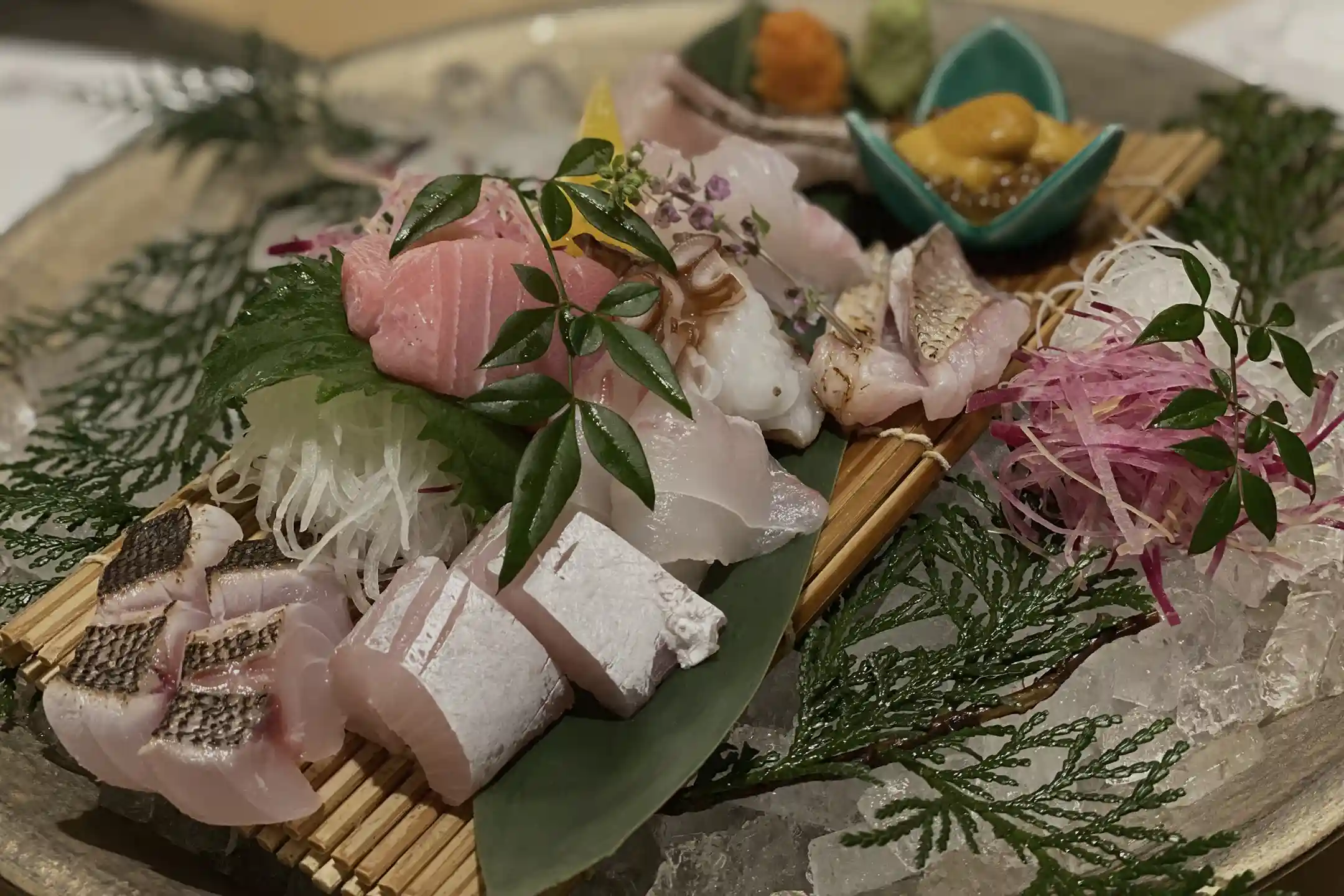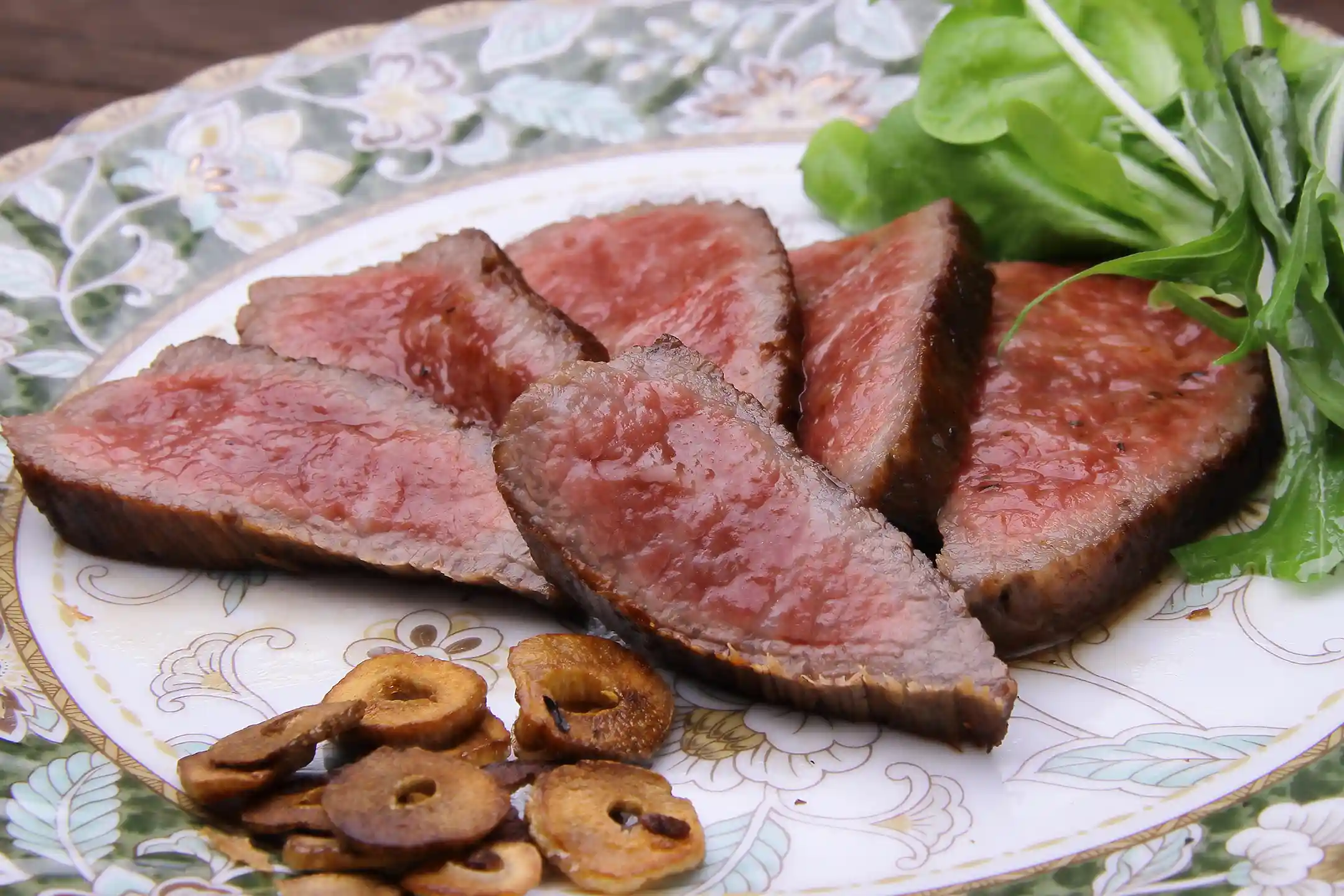Supported by abundant blessings from the sea and mountains—and having evolved through centuries of international exchange—Fukuoka food stands out as one of Japan’s premier “culinary treasure troves.” The region boasts an array of enticing local dishes, such as Hakata ramen, mentaiko (spicy cod roe), motsunabe (offal hot pot), and mizutaki (chicken hot pot). Behind these delights lies a multi-layered history shaped by ingredients and techniques from Japan and abroad, as well as the strong community ties fostered through local festivals and events.
In this article, we introduce a broad spectrum of Fukuoka’s culinary appeals for visitors from Western countries—from fresh ingredients nurtured by the region’s rich natural environment to traditional festivals, market experiences, and workshops. By weaving together uniquely Japanese aspects with an international perspective, we hope to offer a guide that lets you fully enjoy Fukuoka’s diverse food culture. Rather than focusing solely on “Hakata ramen = tonkotsu ramen,” you’ll discover fascinating background stories that often lead to, “Wow, I never knew that!” We invite you to keep an eye on mutual understanding as you delve deeper into the essence of your journey.
Introduction — Why Fukuoka Food Is Loved by Food Enthusiasts
A Culinary Treasure Trove Nurtured by Abundant Nature
Fukuoka is blessed with a mild climate even by Japanese standards, yielding a wealth of agricultural, forestry, and fishery products each season. From the seafood in the Genkai Sea (Genkai-nada) to mountain-grown vegetables and fruits, the region is so abundant that it has long been called a “culinary treasure trove,” attracting numerous gourmands (*1).
While food culture in the West is also diversifying, it’s rare to find a geographic setting where the sea and mountains lie so close together—allowing one to enjoy a wide variety of ingredients in a single meal. Viewing these differences from a cultural relativism perspective may answer questions like, “Why do people eat raw fish in Japan?” These discoveries can turn the surprises of travel into fresh learning experiences.
Enjoying Both Sea and Mountain Delicacies Thanks to Fortunate Geography

Fukuoka Prefecture, located along the northwestern coast facing the Genkai Sea—a prime fishing ground—lands various fish such as squid, sea bream, and mackerel. Meanwhile, inland areas like the Chikugo Plain and mountainous regions produce renowned rice, vegetables, and fruits. This unique geography, where both sea and mountain fare coexist, contributes to the rich variety found on local tables.
A particularly noteworthy dish is “goma saba,” where freshly caught mackerel is marinated in soy sauce and sesame. Visitors from Western countries are often astonished, asking, “Is it really okay to eat mackerel this way?” Because it’s served immediately after being landed, fresh bluefish can be enjoyed safely. These cross-cultural perceptions mark the first step toward deeper understanding.
A Wide Variety of Local Dishes Featuring Regional Ingredients
Fukuoka’s specialties—like Hakata ramen, motsunabe, mizutaki, and mentaiko—developed distinctive flavors by maximizing each ingredient’s inherent qualities. Scenes of slurping ramen at a late-night yatai (food stall) or friends gathering around a hot pot after a festival highlight the communal spirit typical of Japan.
In contrast, restaurants in the West often emphasize individual preferences and personal dining spaces, providing an interesting comparison. Learning about these differences isn’t meant to create an “otherness” but to understand the history and climate behind them—a bridge to mutual cultural understanding.
The Historical Background and Cultural Appeal of Fukuoka Cuisine
A Multicultural Taste Cultivated by International Exchanges Since Ancient Times
Since ancient times, Hakata has engaged in active trade with China and the Korean Peninsula, adopting diverse ingredients and cooking methods that shaped its unique Fukuoka food culture (*1). One theory suggests that during the Kamakura period (1185–1333), Zen monk Shoichi Kokushi introduced milling techniques, along with udon and soba noodles, upon returning from Song China (*2).
While such cultural acceptance might be discussed through concepts like “Orientalism” or “ethnocentrism,” Hakata’s approach is far from one-sided. Locals flexibly adapt and transform foreign influences to suit Fukuoka’s climate and taste preferences—a defining trait that has shaped Fukuoka’s food culture.
The Connection Between Festivals, Events, and Local Dishes
Fukuoka’s food culture is deeply tied to seasonal festivals and events. For example, yellowtail (buri) is included in Hakata’s New Year’s ozoni soup, reflecting customs around this auspicious “success” fish as well as historical practices of serving soba mochi at New Year’s (*3).
Underlying this tradition is a strong sense of community—everyone enjoying the same meal. In Western countries, holidays like Christmas or Easter often focus on family gatherings with iconic dishes like turkey or Easter eggs. Comparing these customs reveals how food culture takes on significant social roles in each society.
The Name “Hakata” and the Story It Tells About Its Food Culture
There are theories suggesting that the name “Hakata” points to a place historically bustling with people, goods, and information (*4). Its urban port has been pivotal in commerce through the ages, boosting the growth of its local cuisine.
It wasn’t just commerce that thrived; a legacy of local hospitality continues to shape Fukuoka food today. Understanding this backdrop shows why “Hakata ramen” and other “Hakata”-branded fare command such strong brand appeal; the name itself is steeped in history and identity.
Must-Try Classic Dishes in Fukuoka

Hakata Ramen | Rich Pork Bone Broth with Thin Noodles
Hakata ramen has its roots in pork-bone ramen first developed in Kurume during the early Showa period (1926–1989). Legend says the creamy white broth was the result of accidentally overcooking the soup, creating the flavor now synonymous with Fukuoka. After World War II, it surged in popularity alongside the city’s yatai (street food stall) culture, leading to unique customs like “kaedama” (noodle refills) and varying noodle firmness (*1).
Though sometimes labeled as “B-grade gourmet,” this dish is in fact a cultural institution, reflecting an ongoing interplay of tradition and innovation. Meticulous attention to broth richness and noodle texture exemplifies the Japanese spirit of fine-tuned hospitality.

Motsu Nabe | Hot Pot with Beef or Pork Offal and Vegetables
Motsu nabe combines beef or pork offal with vegetables in a hearty hot pot. It gained popularity among coal miners and the general public after World War II for being both affordable and nutritious. Variations include miso, soy sauce, salt, and even Western-inspired flavors.
Offal can be a “challenging” ingredient in many Western cuisines, but it’s mainstream in Fukuoka. Transforming these lesser-used parts into delicious dishes resonates with the Japanese concept of “mottainai,” which emphasizes minimal waste. This perspective of valuing the whole ingredient keeps the door open to new culinary possibilities.

Mentaiko | Spicy Cod Roe Marinated in Chili Peppers
In 1949, Mr. Toshio Kawahara—founder of “Fukuya”—was inspired by Korean chili-marinated fish roe and created karashi mentaiko. This dish has become a nationwide favorite souvenir representing Fukuoka. Its bold seasoning pairs perfectly with rice, showcasing the essence of Japan’s “marinating culture.”
Mentaiko is also adapted into pasta sauces and bread spreads, blending Western staples with a distinct Japanese spiciness. Examined through a postcolonial lens, this exchange symbolizes mutual enrichment—different culinary cultures elevating each other with no sense of hierarchy.

Mizutaki | Chicken and Vegetables in a White Broth Hot Pot
Mizutaki features bone-in chicken simmered for a creamy white broth. The standard approach begins with sipping the broth, then dipping chicken and vegetables in ponzu sauce or similar condiments.
Topping it off with a rice porridge made from leftover broth spotlights Japan’s communal dining style, where everyone shares from the same pot. Though this might feel unusual for first-time Western visitors, we encourage you to try it. Around a shared meal, cultural and individual differences often melt away, offering a surprising sense of connection.
Food Activities That Let You Experience the Culture
Yanagibashi Rengo Market Tour
Known as the “kitchen of Hakata,” Yanagibashi Rengo Market boasts nearly a century of history, serving both local residents and professional chefs (*1). The bustling arcade is lined with fishmongers and produce vendors, echoing with the vibrant sounds of the local dialect.
Many Western visitors are struck by the market’s energetic atmosphere—loud vendor calls and plenty of free samples. This closeness between seller and customer reflects Japanese commerce traditions. Nearby eateries serve fresh seafood bowls, and the nostalgic ambiance immerses you in daily local life, making a market tour a must when exploring Fukuoka food.

Local Cuisine Workshops
Facilities like the “Mentaiko Dojo” offer hands-on experiences making mentaiko or preparing Hakata ramen broth (*2). Engaging in the cooking process gives you an almost unconscious grasp of Japan’s “marinating culture” and “dashi culture.”
These workshops go beyond teaching technical skills. They help you experience the stories behind each dish—like the origins of mentaiko or the lore of Hakata ramen—deepening your appreciation for Fukuoka’s gastronomic traditions. For visitors from the West, it’s a perfect introduction to Japanese culture, transcending language barriers by engaging all five senses.
High-Quality, Refined Dining Experiences
Michelin-Starred and Michelin-Listed Restaurants
Fukuoka teems with Michelin-starred restaurants across different cuisines—Japanese, French, and Italian. In the Michelin Guide 2019, several French restaurants in the region received stars, reflecting how local chefs creatively utilize fresh local ingredients.
Seeing Western cuisines like French or Italian reinterpreted through “Japanese ingredients” and “Japanese hospitality” is fascinating. While debates around “cultural appropriation” do exist, many Fukuoka chefs approach these cuisines with genuine respect, fostering ongoing innovation and mutual understanding. This synergy paves the way for vibrant new flavors to blossom.
Restaurants That Blend Modern Art
Another hallmark of dining in Fukuoka is the fusion of cuisine and art. Beyond museums, many cafes and restaurants display works by local artists (*1).
A notable spot is “TAG STÅ,” where you can enjoy breakfast or coffee while taking in curated artworks (*2). Reflecting on what a piece “means” or “how it makes you feel” aligns with the inclusivity of queer theory—embracing a spectrum of viewpoints. Spend a little time in a space where food and art converge, igniting both your palate and your imagination.
Extra Tips to Enrich Your Trip
Nearby Art Facilities and Architectural Tours
After indulging in Fukuoka food, consider visiting nearby spots like the Fukuoka Art Museum, which houses masterpieces by Dalí, Kusama, and sometimes Basquiat (*1). In old Hakata, guided tours of Zen temples and Shinto shrines are also popular, shedding light on how religion and tradition permeate daily life in Fukuoka (*2).
Along the way, you’ll see how Japanese society has long embraced coexistence of varying beliefs and values. Such experiences broaden your understanding of both art and culture, making your trip more fulfilling.
Seminars and Events for Learning Traditional Culture
Beyond cuisine, Fukuoka offers countless opportunities to further explore Japanese tradition, from tea ceremony classes at Rakusuien to Hakata doll painting workshops. Participating in a tea ceremony or painting your own folk art at the Hakata Machiya Furusato-kan reveals how communities keep cultural heritage alive.
Viewed through Western lenses like feminism or intersectionality, older systems—such as geisha culture or master-apprentice hierarchies—can spark compelling discussions about gender roles and social structures. These experiences might prompt deeper reflections on culture, past and present.
Conclusion
We’ve explored why Fukuoka food is beloved by enthusiasts worldwide, taking in its rich natural environment, multicultural history, and deep-rooted traditions. From the bounties of sea and mountains, Fukuoka has created signature dishes—like Hakata ramen, motsunabe, mizutaki, and mentaiko—woven together by festivals, communal practices, and human connections. Visiting Yanagibashi Rengo Market or taking a mentaiko workshop offers more than just a meal; it provides insight into the stories behind each dish.
Meanwhile, Michelin-starred dining and art-infused restaurants showcase how Fukuoka marries tradition with innovation, forming a truly vibrant culinary tapestry. Pairing these food experiences with tours of old Hakata or visits to art museums turns your trip into an immersive journey through history, art, and local culture.
Inherited and honed by generations, Fukuoka food embodies both a “flexibility to adapt and evolve” and a “spirit of sharing.” We invite you to savor these treasures with all five senses—and perhaps see beyond mere “Japaneseness” to discover new perspectives. You may be surprised by how many “I had no idea!” moments await in Fukuoka.
Author Bio





.webp)
.webp)